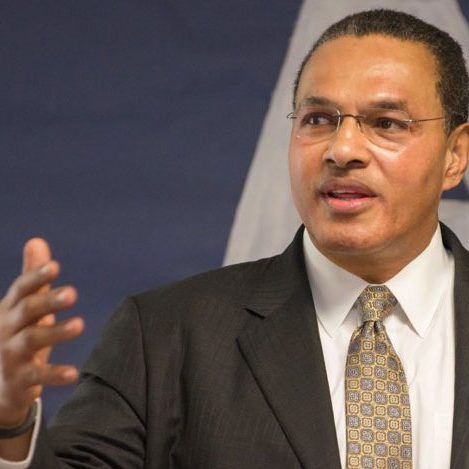Freeman Hrabowski, President of UMBC since 1992
During the turbulent 1960s in Birmingham, Ala., Freeman Hrabowski was a young math whiz more inclined to tackle a tough math problem than engage in the Civil Rights protests swirling around him.
But after marching in the Children’s Crusade and spending five days in jail, he felt inspired to imagine a better life for himself and for Black children like him – a dream that propelled Hrabowski to the presidency of the University of Maryland, Baltimore County (UMBC), and led him to transform the school into a national hub for Black scientists, engineers and mathematicians.
“Tomorrow can be better than today, and each of us can be empowered and get involved in the world and to make tomorrow better for all the children and all the people,” Hrabowski said. “That inspired me in my life to be involved in education.”
From commuter school to STEM graduate powerhouse
UMBC named Hrabowski president in 1992, five years after he joined the institution as vice provost. Across his tenure, he championed Black students in STEM. In 1998, through a collaboration with philanthropist Robert Meyerhoff, UMBC launched the Meyerhoff Scholars Program, which started as a scholarship for African-American male undergraduates committed to earning STEM Ph.D.s. The program soon expanded to include women and students of all races sharing an interest in pursuing STEM doctorates and in advancing minorities in these areas, and it has become a national model in diversifying STEM fields. Program alumni have forged a pipeline of talent into advanced degree programs at such universities as Harvard, Stanford, Duke, MIT, Georgia Tech, Johns Hopkins, and the University of Maryland.
Today, UMBC’s six-year degree completion rate for Black students is about the same as it is for the student population overall. In addition, UMBC is the country’s No. 1 producer of African American bachelor’s degree recipients who go on to complete M.D./Ph.D.s, and No. 2 for African Americans who go on to complete STEM Ph.D.s.
“It’s by far the greatest thing I’ve ever done, and it’s all Freeman Hrabowski,” Meyerhoff said about the program in 2012.
The secret to building a powerful STEM program is not so secret, said Hrabowski: it’s about setting high expectations, building a strong sense of community, providing support and building evaluation into the program. It’s also about getting to know the students – even if your schedule involves traveling the country to talk about STEM education.
“I can’t speak to other universities,” one student, Miguel Calderon, told the Baltimore Sun. “But from what I hear, it’s not an everyday thing to see the president asking students, ‘How are your classes? What did you get on your last test? You didn’t do well? Maybe you need a tutor.’ It’s really a miraculous thing.”
National recognition; Hometown commitment
Hrabowski’s success has thrust a national spotlight on UMBC, with universities including MIT and Stanford visiting to seek Hrabowski’s counsel and learn how a former commuter school has become renowned for graduating STEM (science, technology, engineering and math) students from racial and ethnic groups that are underrepresented in these fields.
Though deluged with national honors – including recognitions from TIME, U.S. News & World Report and the Carnegie Corporation – he remains committed to Baltimore and the power to demonstrate the brilliance of diverse young scholars.
“My reason for staying is the people. When you feel that people care deeply, you can’t help but care also,” he said. “And life should not be about jumping from one place to another. We want to teach young people to stay the course and make a difference wherever you are.”
For more on Hrabowski’s extraordinary life and accomplishments, see his UMBC bio, his TED talk on the “Four Pillars of College Success in Science” (which has more than 1 million views) and his publications, including this 2020 piece in The Atlantic on how higher education can help to dismantle structural racism.
